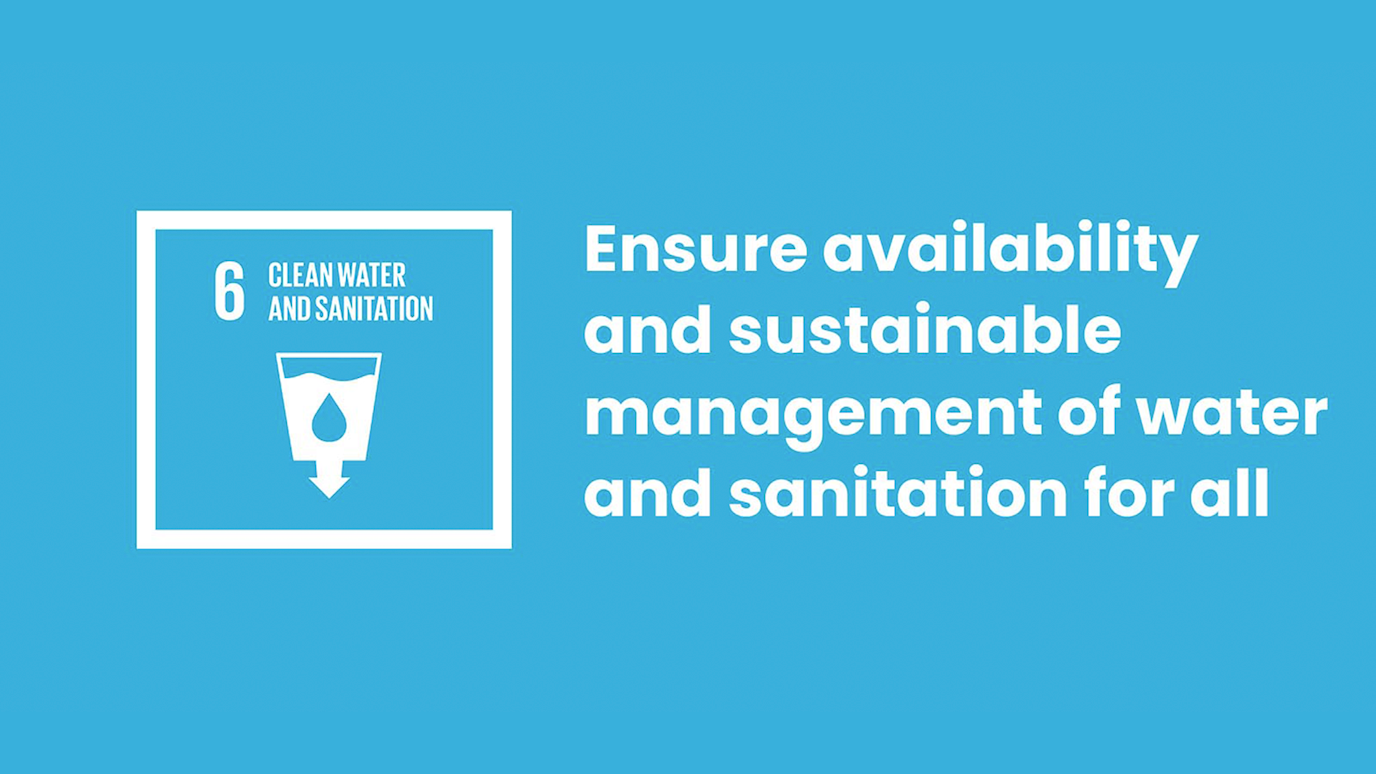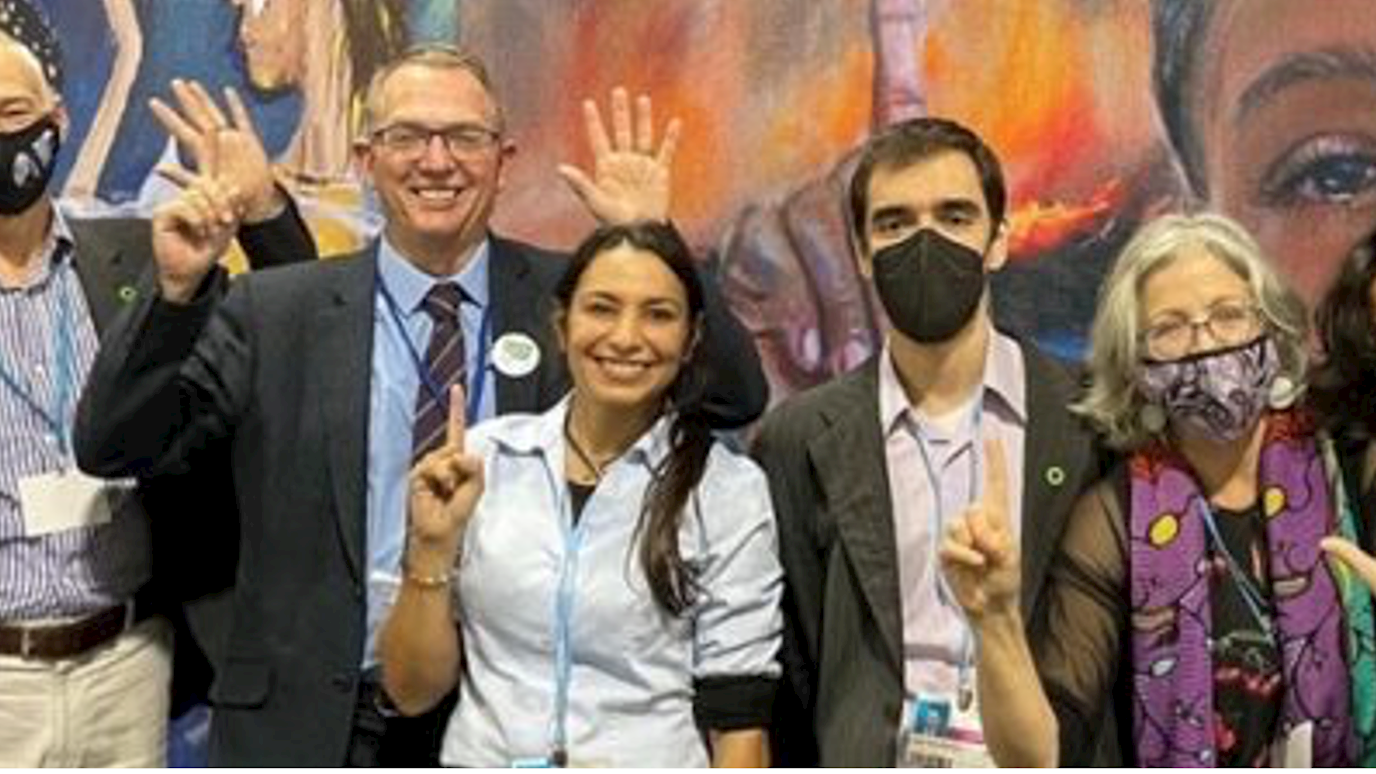Researchers at Royal Holloway are contributing to SDG 6 – ‘Clean Water and Sanitation’ – with a research project aiming at the development of a low-cost device to assay drinking water for lead, writes Alexander Deisting.

Hands–Face–Space, the unofficial motto of the best part of 2020 and 2021, was and is part of the messaging of numerous governments around the globe to urge their citizens to stop the spread of COVID-19. The slogan summarises various actions and also assumes the availability of, for example, face masks, clean water and soap. While the latter items on the list may be considered basic, it has to be stressed that access to clean water and sanitation remains a challenge for millions of people around the world. A recent World Health Organisation (WHO) report on hand hygiene notes that at least 2.3 billion people still lack facilities to wash their hands at home.
Despite improvements in water sanitation, treatment and distribution, there are concerns that at the current rate of progress up to 1.6 billion people will still lack access to safe water by 2030. Many of those people are to be found in the most impoverished countries in the world. Drinking safe water improves health, reduces childhood mortality, and reduces the danger of waterborne disease. Reaching the goal of ‘ensuring access to water and sanitation to all’ will require rapid investment in proven technological solutions, including household water treatment. But simply securing access to safe water remains challenging for communities the world over. Lead pollution is one particular problem when it comes to drinking water. Researchers at Royal Holloway, University of London are contributing to SDG 6 – ‘Clean Water and Sanitation’ – with a research project aiming at the development of a low-cost device to assay drinking water for lead.
The lead contamination problems that need to be tackled
Lead (Latin: plumbum, Spanish: plomo) is a dense heavy metal which is at the same time soft and malleable and also has a low melting point of just above 327°C. These features make lead a popular metal in industry, starting in pre-Roman times and lasting up until today. Its main disadvantage: it has extremely adverse effects on living beings when they take it in. In the developed world, humans are not likely to be exposed to lead any more, as the metal has been phased out as a material used in pipes, paint, petrol and cladding, to give a few examples. Disasters like the lead contamination of drinking water in Flint, Michigan, US, or the lead fallout from the devastating fire at Notre-Dame cathedral in Paris, France show, however, that lead is still there and waiting, even in countries where lead pollution is supposedly no issue.
Today, lead is, for example, present in the lead-acid batteries of combustion engine cars. The move to electric cars will make these batteries redundant, meaning that the number of batteries which need to be disposed of will grow in the near future. Ideally, they will be recycled. Judging by the current state of affairs, however, there is a real danger that a fair share of this recycling will take place in a makeshift manner in developing countries. This creates a sizeable health risk to those recycling the batteries, and to their surroundings, through the resulting lead pollution.
The Romans already knew that lead impacted health badly and that their lead pipes had an effect on drinking water quality. Lead accumulates in the body when it is ingested or inhaled and has an adverse effect on multiple organs, including nervous system and cognitive process failures. The latter are particularly bad in children, because lead is not evacuated from the body and its damage is permanent. Globally, about 800 million children suffer from lead poisoning at a level which is known to result in permanent brain damage and they furthermore suffer from a loss of 3 to 5 IQ points. An estimated 26 million people are at risk from lead exposure in total. Most of them live in developing countries where the primary sources of human lead exposure are the aforementioned unsafe recycling of lead-acid batteries, contaminated spices and food products, and cookware which contains lead.
In these countries, access to lead assay methods, which test for the presence and concentration of lead, is often non-existent or prohibitively expensive. The WHO states that there is no safe amount for lead ingestion, but still quotes 10 parts-per-billion as a value for lead contamination in, for example, drinking water.
Collaborating to measure lead levels affordably
The first step in the prevention of lead ingestion is to enable people to assay their drinking water or their food for lead contamination. Researchers from Royal Holloway, other UK institutions, and from universities in Mexico City and Argentina started a collaboration in 2018 to – among other projects – develop a cheap sensor to do just that. This work has been funded by Global Challenges Research Fund (GCRF).
Most of us are experts in dark matter searches and detector development. The search for a tiny amount of lead in water has similarities to efforts undertaken during the construction of detectors searching for dark matter: To build such dark matter experiments you have to understand the composition of the materials used very well and thus assay these materials for possible radioactive impurities. This is similar to detecting a small amount of lead, such as an amount corresponding to the WHO value, in a litre of drinking water.
Our first idea was to exploit the fact that lead always occurs with traces of radioactive isotopes, which emit various kinds of decay radiation. A silicon sensor can measure this radiation and can not only indicate that there is radiation present but also measure the energy of gamma-rays and x-rays. Combining prior knowledge on isotopes occurring together with lead and performing a measurement of the radiation’s energy would thus allow lead detect detection. One silicon sensor most of us are carrying around every day is the camera chip in our smartphones. We explored with a special, scientific camera if one could perform such a measurement. We showed that the measurement idea works, but that even the scientific sensor is not sensitive enough to measure lead contents close to the value discussed by the WHO. While the method is still interesting for measuring different sources of radiation, it will not enable you to place a drop of water on your mobile phone’s camera lens and start an application which checks if there is lead in the drop.
Given that recruiting the silicon sensor in a camera is not enough to serve as a device for lead assay, a new idea was needed. Collaborators of our scientist in Argentina had developed an assay system for arsenic based on a biosensor. We created a new collaboration, again with scientists at Royal Holloway, from Mexico City and Argentina. However, this time we not only had physicists on board, but also engineers and biologists from institutions in Argentina, as well as social scientists from Royal Holloway (this project was also funded by GCRF).
About the PlomBox
Image shows the prototype PlomBox.
Our goal is to develop a low-cost system based on the previous work with arsenic in Argentina, but this time for lead detection: PlomBox.
How does the PlomBox work? A water sample is placed inside the PlomBox and transferred by the capillary effect into the biosensor. This sensor consists of genetically modified Escherichia coli (E. coli) bacteria, which change their colour in the presence of lead. While E. coli strains usually make the news for bacterial outbreaks of food-borne illnesses, they are essential for the PlomBox to measure the presence of lead. The E. coli in the PlomBox contain a protein which binds to lead and a reporter (a gene that allows measurement, or reporting, via a characteristic that is easily identifiable or measurable, such as colour).
When the bacteria bind to lead, a signal is released, based on the type of reporter. Most of our tests have been done with a colorimetric reporter, which produces a bluish colour in the presence of lead. The intensity of the colour produced by the reporter corresponds to the lead level in the water sample. Experiments show that lead levels below the WHO value of 10 parts-per-billion for lead in water can be reached.
Having now a way to indicate low concentrations of lead, we need to measure it. A camera chip – in other words, a silicon sensor – on a micro-controller board records the colour change of the bacteria inside the PlomBox. This electronics board is itself controlled by a smartphone application, which starts the measurement with the box after the water sample has been placed inside. The application also extracts the data and ships it to a server. On the server, the images of the bacteria are analysed and the user of the PlomBox receives the analysis result – the lead content of the water – on their phone.
Image shows the camera chip silicon sensor and printed circuit board.
Right now, we are well advanced in the prototyping stage of all parts of the project and have built the first prototype PlomBoxes. We are examining the interplay between our key components – the silicon sensor and the bacteria – and are optimising the biosensor as well as the colour change analysis. Our goal is to have a fully working prototype, demonstrating low-cost water assay, by the end of 2021. The first field test will be in Argentina, performed by our collaborators there, together with an organisation dedicated to water quality monitoring.
Alexander Deisting is a physicist and post-doctoral researcher at Royal Holloway, University of London. His main interest is the development of new and improvement of existing technologies for particle detection and he has worked to develop detectors for large experiments, such as at CERN's Large Hadron Collider. In particular, he works on time projection chambers, which make the tracks of charged particles passing through them visible. With researchers from Argentina and Mexico he is developing a device to detect lead in drink water using colour-changing E. coli bacteria. This project brings detection techniques used in particle physics to the wider world.
























